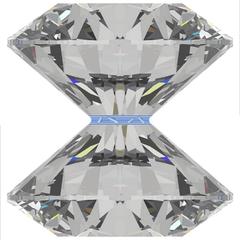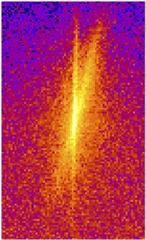URL: https://www.desy.de/news/news_search/index_eng.html
Breadcrumb Navigation
DESY News: Nanometre gaps can crystallise liquids
News
News from the DESY research centre
Nanometre gaps can crystallise liquids
Very narrow gaps make liquids crystallise partially. X-ray investigations at DESY show that in gaps just a few molecule diameters wide both, liquid and crystal properties of a material can exist at the same time. The observation of this coexistence is important for all liquids in very small cavities and thus also for the study of friction (tribology). The team led by DESY researchers Milena Lippmann and Oliver Seeck presents the research in The Journal of Physical Chemistry Letters.

Experimental set-up: In a diamond anvil cell, liquid is confined to a few nanometres narrow gap (centre). In this environment, layers and crystallisation coexist, as the X-ray investigation has shown. Credit: DESY, Milena Lippmann
“Despite this layering, the liquid remains liquid – the chemistry and physics of the layer do not change fundamentally,” explains Seeck. “An interesting situation arises if two smooth interfaces are brought together to a nanometre distance with a liquid between them.” One nanometre is one millionth of a millimetre. This brings the distance into the realm of molecule sizes. Depending on the specific liquid, its molecules can have a diameter of half a nanometre, for example.
In this case, theory expects the layering of the molecules to overlap on both sides and thus become stronger. “However, the predictions are divided as to whether the physical and chemical properties of the liquid will be retained or whether the restricted geometry will also lead to a change in the thermodynamic properties,” says Lippmann. “The latter can cause the liquid to crystallise – not because of pressure or temperature, but simply because it is thermodynamically more favourable in the narrow gap. This case would have a significant effect on all chemical and physical processes in the slit, since a crystal behaves very differently from a liquid.”

Pattern of the X-ray light diffracted by the sample. The vertical line is characteristic for liquids, the tilted line shows the crystal properties of the sample. Credit: DESY, Milena Lippmann
In this way, the material in the nanometre gap has both, the properties of a liquid and of a crystal. This can also be seen in the X-ray scattering images, which simultaneously show so-called Bragg reflections, a characteristic of crystals, as well as the scattering signal of liquid layers.
“Our observation has direct consequences for all types of liquids in very small cavities; this can be important for catalysis or other chemical reactions in nanometre gaps, for example, but also for investigating friction and correct lubrication,” emphasises Seeck. “The planned next generation of DESY's X-ray source, PETRA IV, will be able to investigate this process much more precisely, possibly also showing the dynamics.”
Reference:
Experimental Observation of Crystal–Liquid Coexistence in Slit-Confined Nonpolar Fluids; Milena Lippmann, Oliver H. Seeck, Anita Ehnes, Kim Nygård, Florian Bertram und Anca Ciobanu; The Journal of Physical Chemistry Letters, 2019; DOI: 10.1021/acs.jpclett.9b00331



